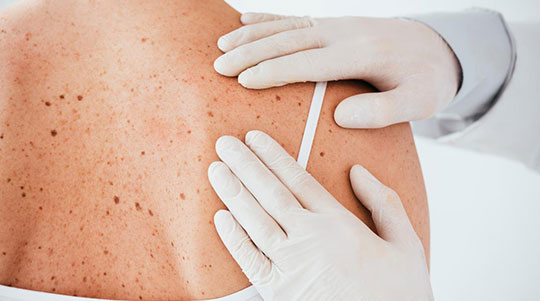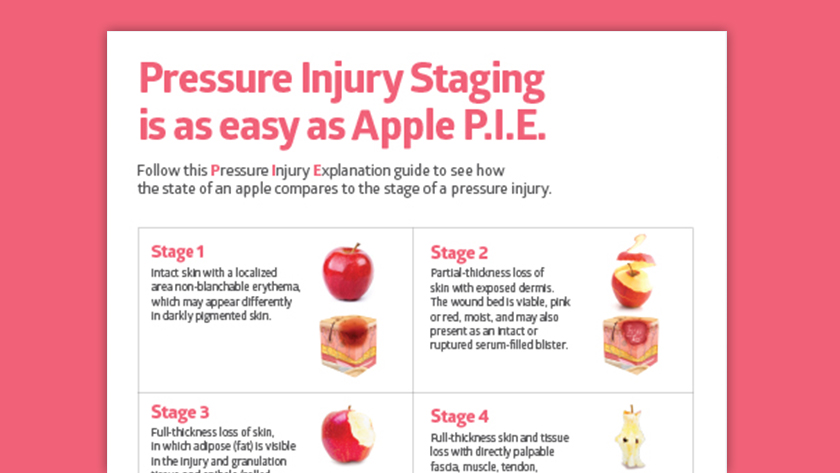Team up to prevent pressure injuries and improve outcomes
Empower staff to support best practices by building a skin champion team.
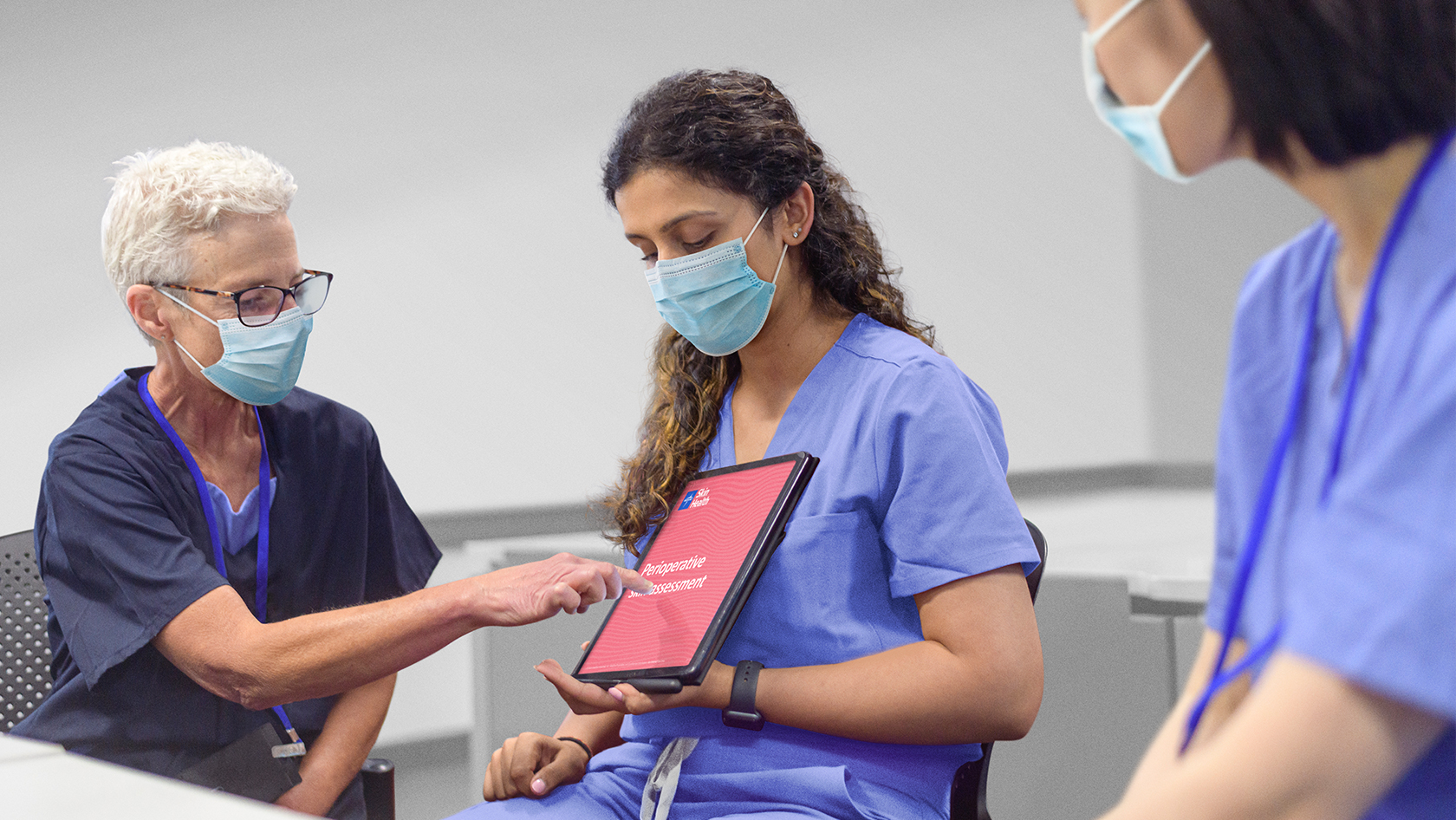
Frontline nurses are stretched thinner than ever, many leaving nursing entirely, which means fewer eyes on skin and more responsibility on your shoulders. Building—or maybe rebuilding—a skin champion team is a great place to keep skin care top of mind.
Your education and experience often put you in the driver’s seat for this type of skin health initiative. Fortunately, there are skin champion programs available, so you don’t need to reinvent the wheel, just provide the fuel.
Why does your facility need skin champions?
Research shows that one of the most effective ways to improve outcomes is through subject matter champions.1 At Texas Children’s Hospital, for example, the development of a skin champion program contributed to an 85 percent reduction in healthcare associated pressure injuries.2
85% drop
in pressure injuries with a skin champion program2
Each skin champion plays an essential role in helping achieve the skin care goal of preventing skin breakdown. “We can’t be everywhere,” notes Medline Clinician Katie James BA, RN, CWCN. “With a skin champion team, you have more people actively focused on pressure injury prevention.”
How do they do that? One of the most important things a skin champion can do is to promote evidence-based best practices within units and beyond.
An active skin champion team also allows you to use your own time as efficiently as possible. “I like the idea of people not having to depend on me but being empowered to care for patients on their own,” says Belinda Toatley, RN, BSN, WCC, Prisma Health.
Empowering frontline staff to care for skin is a win-win.
10 more ways skin champions can positively impact skin and wound care:1
- Serve as the unit resource for pressure injury prevention
- Educate and update unit staff on new products and protocols
- Assist in developing individual care plans
- Attend to at-risk patients and residents
- Ensure pressure injury prevention interventions are made
- Identify unit-level barriers to prevention
- Participate in pressure injury prevalence and incidence studies
- Help onboard new staff to follow prevention best practices
- Standardize skin and wound care protocols
- Trial and recommend new pressure injury prevention solutions
Gain leadership support
The key to launching and sustaining a skin champion team is getting leadership on board from the start. “You’re dead in the water without C-suite support,” notes Kara Couch, MS, CRNP, CWCN-AP, FAAWC, Nurse Practitioner, Director Wound Care Services, George Washington University Hospital.
“You definitely need to have all the different people involved—CEO, COO, even chief medical officer. Getting face time and making sure they’re supportive and understanding is very important,” Couch stresses.
“This is not a nursing only problem, this is not a doctor only problem, this is a system problem.”
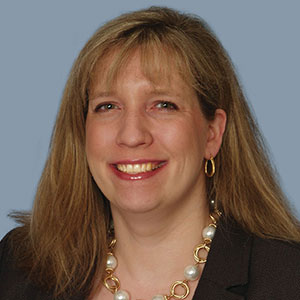
Kara Couch
MS, CRNP, CWCN-AP, FAAWC, Nurse Practitioner, Director Wound Care Services, George Washington University Hospital
How do you get that support? When it comes to earning buy-in from managers and directors, it’s important to be prepared.
“You need to convey strong and compelling reasons why you need their support,” James says. Although James admits that learning “leadership” language might mean going outside of your comfort zone a little, she encourages you to look at it from a business standpoint. “You’ve got to create SMART goals, a budget and plans for quantifiable results,” she says.
Strengthen your case with a corporate approach
SMART goals are an effective and concise tool for organizing your thoughts into a structured and results-oriented format. It’s a popular business method, so it’ll work well when presenting your plan.
SMART goals are:
Specific: What would you like the outcome to be? This is what gives your team credibility.
Measurable: How will you know when you have reached the goals?
Attainable: On a scale of 1 to 10, how confident do you feel you’ll achieve the goals?
Relevant: Be sure your team’s goals align with the facility’s overall goals.
Timed: When do you want to reach the goals?
“By stating these goals and identifying the team objectives, managers and administrators can see how your team contributes to the overall organization,” James says.
In addition to your goals, it’s helpful to present leadership with a proposed budget, including the following line items:
- Number of staff hours required
- Average salary of staff
- Number of meetings per year
- Preparation hours
- Annual supplies
During the year, maintain C-suite support with regular team updates. In particular, they’ll want to hear the impact of your team’s efforts. “Track your pressure injury reductions, track the different dressings you’re using, track the Braden scores, all of that,” James says.
Tips for creating your skin champion team
“Skin care is a team sport,” Couch likes to say. “This is not a nursing only problem, this is not a doctor only problem, this is a system problem,” she says. In other words, when you’re putting together your team, be sure your group represents the whole system, starting within units.
“Skin champions are expert resources for their teammates in their units,” Couch says. She advises getting at least two people from each unit to be part of the skin champion team: one nurse and one tech.
In fact, unit-based skin champions are an important element to any quality initiative team because they’re already entrenched in the specific care setting, and colleagues may be more likely to listen to “one of their own” than an “outsider.”1
“Skin champions are expert resources for their teammates in their units.”
Kara Couch
MS, CRNP, CWCN-AP, FAAWC, Nurse Practitioner, Director Wound Care Services, George Washington University Hospital
Simple flyers can announce your call for volunteers to join the team. Remember to hang them in places where everyone can find them, including with physical therapists, certified nursing assistants, educators and doctors.
Be sure to hype it up around the water cooler, too—whether that means in person, virtually or through social media.
When you have your team, broadcast and boast about it in the break room, at conferences and to leadership. In other words, make membership desirable, involving more than just work, but camaraderie as well. “One wound care nurse I know found money to order T-shirts for all of her skin champs,” James recalls. “Every Friday, they wear their team shirts. It gives them ownership and bragging rights.”
What happens if your recruitment efforts stall? “If you don’t get recruits, you’re going to volun-tell some people to do it,” Couch states. “Yes, somebody will say, ‘Well, I don’t really like skin,’ and I tell them, ‘Well, you treat people with skin.’”
Tips for sustaining your skin champion team
“The path to a successful skin champion team is creating a framework,” James says. “If you don’t have a clear plan, you’re destined to failure.” Half-hearted attempts or goals with holes might waste everyone’s time, including yours.
With your team in place, next order of business is the writing of a charter, sometimes referred to as the “North Star” for your team. James explains, “It’s basically a set of rules to outline your program, set up a process and provide clear expectations for the team members and for what success looks like.”
“The path to a successful skin champion team is creating a framework. If you don’t have a clear plan, you’re destined to failure.”
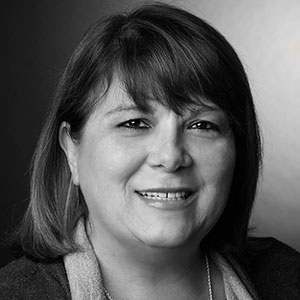
Katie James
BA, RN, CWCN Medline Clinician
Charters typically include the following items:
Background: What inspired the need to form a skin champion team? Was it an increase in HAPI rates? Staff turnover? The important thing is to offer insight and as much data as you can to support the need.
Mission and objectives: The mission statement succinctly communicates what the team will achieve. Keep it short and sweet, yet specific.
Budget and resources: What’s required to sustain the program? Who will do what?
Team operations: This can include everything from meeting schedules to processes for solving problems.
Team member assessment: Holding members accountable sets expectations. Get signatures and approvals of all members annually.
A charter should be updated each year and presented to leadership to demonstrate your continued commitment to and importance of the program. “Invite executive leadership to meet with the team every year and set up quarterly data reviews with the CNO,” James suggests.
Once you’ve got your team in place and you’ve finalized your charter, you can come up with a team name—have some fun with it. And be sure to clearly define each team member’s expectations and responsibilities, including task leaders. For instance, one person might be in charge of reporting the pressure injury data analysis, another in charge of writing a newsletter.
Before each meeting, it’s smart to circulate an agenda. “An agenda can seem like a small thing, but it can make all the difference when time is a limited commodity,” James says. Feel like time is tight? Don’t be afraid to put a time limit on task leader updates to keep the meeting moving.
Keeping the team energized
With all the everyday challenges you and your staff face, it could be easy for a skin champion team to lose its steam. Here are some ways to help keep the momentum going:
- Encourage friendly competition between units and offer a reward for the most improved—like the biggest reduction in pressure injuries
- Communicate regularly with team members, everything from meeting reminders to positive feedback from patients
- Reward and recognize individual achievements frequently with small gifts
- Send out monthly newsletters to introduce team members and publicize successes
- Maintain an effective database to track outcomes that demonstrate the team’s value
James says one of the most tangible success factors of a skin champion team is the change in frontline staff members. “It’s successful when they understand what they’re looking at, they understand how to document skin injury, they understand when to escalate if there’s a problem, and they understand how to do basic evaluation and treatment,” she says.
If you’re not able to fully implement a skin champion team, you can start to lay the groundwork and light the spark. When it’s possible, you’ll be ready to launch your skin champion team with a plan ready to go.
Key takeaway
A skin champion team can make a positive difference for patient and resident outcomes as well as for staff empowerment. A team’s success starts with a plan, a clear set of goals and buy-in from leadership.
References:
- Bergquist-Beringer, Sandra & Derganc, Kelly & Dunton, Nancy. (2009). Embracing the Use of Skin Care Champions. Nursing management. 40. 19-24. 10.1097/01.NUMA.0000365465.01722.4b
- Luton, A., Gordon, M. D., Stewart, M., Steward-Scott, E., Mullen, J., Jones, A., & Hagan, J. (2018). Evidence-Based Skin Champion Program Reduces Pressure Injuries in a Pediatric Hospital. Journal of Nursing & Interprofessional Leadership in Quality & Safety, 2 (1). Retrieved from https://digitalcommons.library.tmc.edu/uthoustonjqualsafe/vol2/iss1/2
- How-to Guide: Prevent Pressure Ulcers. Cambridge, MA: Institute for Healthcare Improvement; 2011. Available at www.ihi.org

